A burnt forest is not ugly, unless a careless human is responsible.
If you’re traveling to the North Rim of Grand Canyon National Park don’t rush through the diversity found in the Kaibab National Forest on the way—ponderosa pine, Douglas-fir, Engelmann spruce, white fir and quaking aspen. The Kaibab Plateau covers about 700 square miles at elevations between 7,200 and 9,000 feet. Many wide pullouts are provided along State Route 67 surrounded by forest live and burned, and meadows with ponds to enjoy and explore. Some have interpretive signs to help you understand the landscapes around you.
As I drove south from Kanab, Utah after a long frustrating day of not getting my truck fixed—something is draining the batteries—the moon kept peaking over the forest on the Kaibab Plateau.
I just had to stop along the old 2006 Warm Fire burn area to photograph the moon. Many of the tall stately trees may no longer live, but create wonderful shapes against the sky. Look closely and you’ll see patches of life that will help reseed.
The Warm Fire started on June 8th, 2006 as a storm swept across the plateau and lightning started a tree on fire south of Jacob Lake. Fire management decided to allow the burn and designated the Warm Fire as a Wildland Use Fire (pronounced whoofoo), monitored yet allowed to burn. Yet this area of the Kaibab National Forest had not been treated by thinning or prescribed burn. The fire smoldered in duff and crept around for a few days then the wind increased and the fire jumped State Route 67, twice. After 16 days 15,000 acres had burned. State Route 67 was closed and visitors and employees were evacuated first via Forest Road 22 on June 26th and two days later on State Route 67. July 3rd the road reopened and by July 4th the Warm Fire was contained using back burning technics. Almost 60,000 acres were burned. Timber removal and reforestation is taking place.
150 years of fire suppression allowed massive build up of bio-fuel resulting in very hot fires that tend to crown and kill the trees. Yet a hot and fast fire does not typically burn up the thick accumulation of needles, and when it does get hot enough to burn, bakes the soil and boils the moisture in the tree roots. Burnt trees fall and add to the future fuel source. Pile burning of stacks of trees and limbs from thinning and prescribed burning (used to be called controlled burn) or underburning, removes built up fuels. The many benefits from forest restoration include, enhancing wildlife habitat, reducing the risk of high-intensity wildland fires, managing rates of insect infestation and disease, and generally improving overall forest health. Basically, trying to undo the mistake of fire suppression.
Fire is natural. On the northern Kaibab forest nearly 1 in 10 ponderosa pines have been struck by lightning and many survive. But that doesn’t mean people should start fires. Please remember the North Rim lies at the end of a dead end road making evacuation difficult to impossible. Not all visitors want to hike across the canyon.
As of May 31, 2012 at 8am the North Kaibab Ranger District implemented restrictions prohibiting fires, campfires, charcoal, coal or wood stoves anywhere on the forest, including in developed campgrounds. For more details go here. Being negligent with fire is punishable by law.
On a lighter note, wandering into Warm Fire today revealed a scattered carpet of Western Hawksbeard from the Sunflower family (Asteracceae) Crepis acuminata for you Latin reading folks.
Hawksbeard is found in dry open areas like sage, under coniferous forests and often on roadsides. It provides fair to very good forage for livestock which is something to watch out for while driving through the Kaibab National Forest where grazing is allowed. (That’s a whole other story.)
Obviously the hawksbeard also provides pollen for the tricolored bumble bees. Their dense blanket of hair insulates the essentially warm-blooded bees allowing them to fly at cooler temperatures than most pollinators. Only the young queens that mated in fall survive the winter and in spring start a new nest raising first a generation of female worker bees and then males produced late in the year.
Oh yea, more news. The North Kaibab Trail closed as of May 31, 2012 when a water pipe burst removing a 45-foot section of trail between Roaring Springs and Cottonwood campground. Trail crew supervisors expect to have the trail reopened by next Friday, June 8, pending any unforeseen circumstances. For more information or regular news releases from the National Park Service go here.
And don’t forget to watch the Venus Transit June 5th, but do it with the appropriate eye protection. And keep watch for the photos I hope turn out while I view it over Grand Canyon.


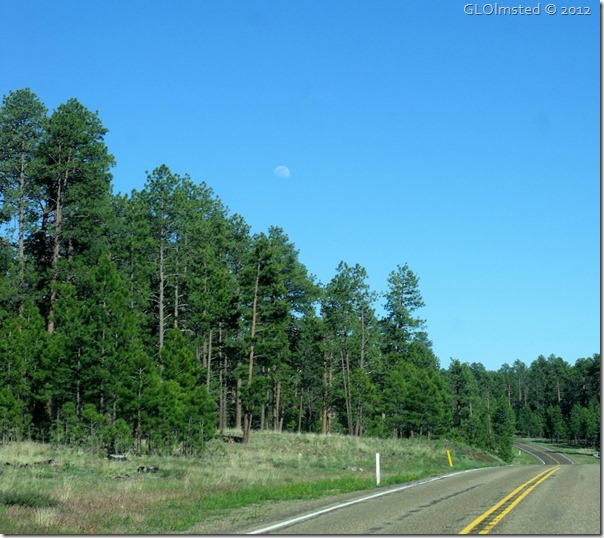
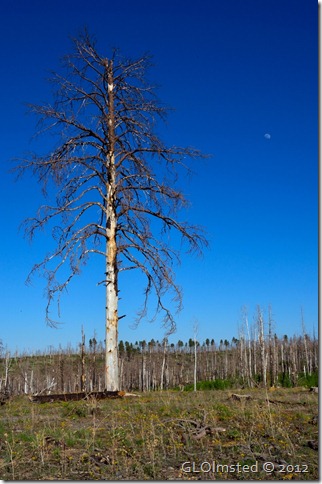
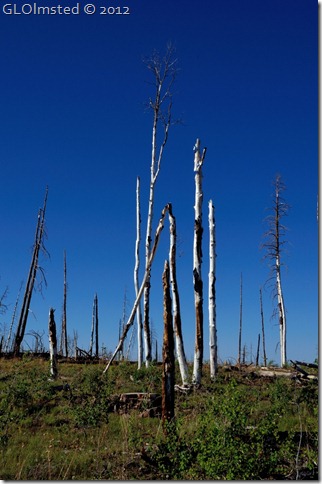
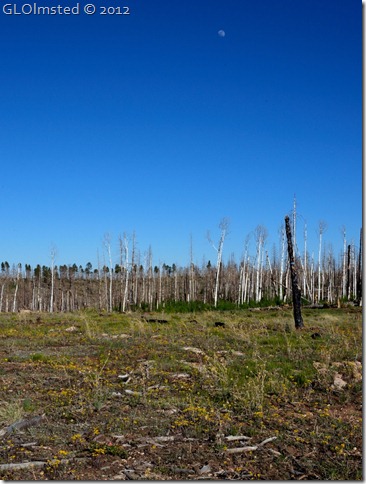
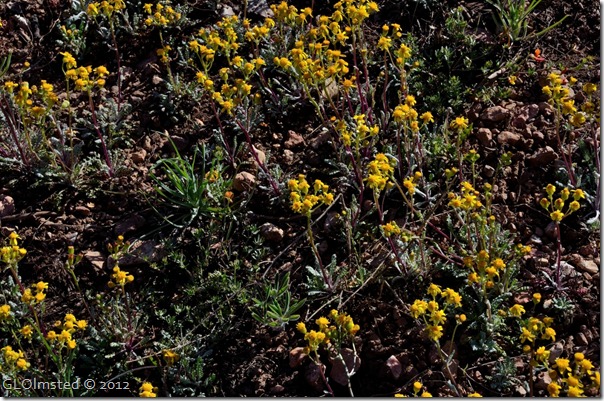
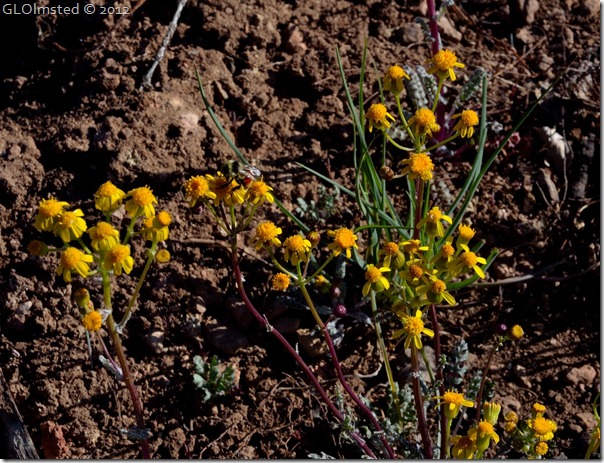
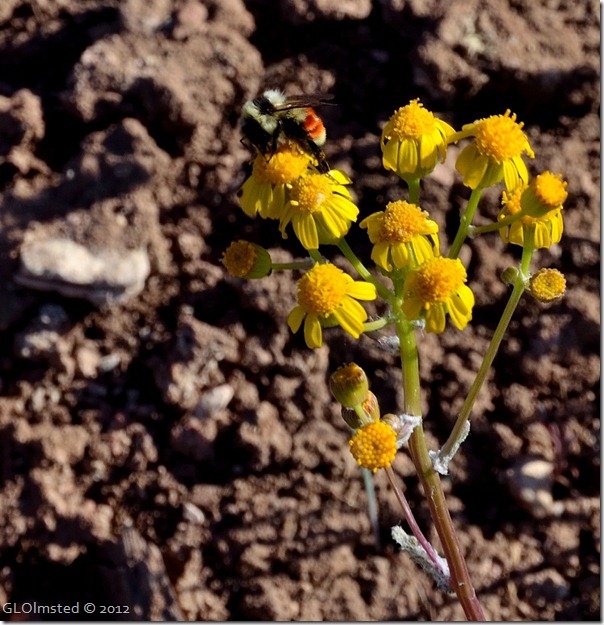
Beautiful post! Thank you!
Interesting information on the fires. Even my old Forest Ranger dad grudgingly admits that suppressing fires went way overboad. He says the old timers burn up the email wires talking about how fires are not fought like they were way back when.
It is interesting driving around with him. He can tell by what trees are up and the variety and other stuff I don’t get, lots of the history of the timber from fires to insect infestations to past clear cutting.
Great info and photos, Gaelyn. I’m hoping the Forest Service takes diseased and dead trees down behind my house In the Nat’l Forest. Last summer, they marked boundaries. I’m worried about fire here.
Very interesting post on fires. A lot of information that most of us do not know.
Great post! Suppresion over the years has allowed for fires to really spread. Mt. Lemmon, years after the fire, has new Aspen growing all around it and to be honest, it’s quite beautiful. There is a lot of open area but the wildflowers, birds, larger critters find shade in the pockets of trees that were spared. It’s devastating at first but things happen in cycles…and it’s good. And I agree! People who start fires with cigs, campfires, etc make me so angry. So selfish on their part. Good advice for all to follow:) Have a good weekend. It has been hazy here and HOT! It was kind of a disappointing day birding. There were a lot of birds, but IT was SO SO BRIGHT out. I didn’t get the shots I wanted, but there were a couple that turned out.
This is interesting, and it gives us pause about making our way to the Rim while conditions are like this. Will monsoon season bring relief?
Beautiful series of photos, especially that first one, and a lot of good information in your post. Fighting fires is much the same here, and they only fight them when homes or lives are threatened. Most of our fires are lightning fires, and the area that is covered by trees is huge. Of course, in a bad fire year the smoke that rolls into town can be very difficult to deal with, but that’s all part of living close to wilderness areas.
Great educational post. I had some professors in college who were passionate about teaching that natural forest fires are healthy and prolonged fire suppression is not healthy… counter intuitive for most folks, but it has stuck with me all these years!
Interesting post with beautiful photos. I remember how the growth used to pop up after large fires in S.Africa. It is amazing where everything comes from. Take care Diane
Save us some of those blue skies and green meadows. Two more weeks and we’ll be there!
This reminds me of Yellowstone and the way it’s come back from the fire in the 1980’s. It really is incredible how nature can restore itself if we leave it alone.
Interesting post on the forest fires. Your photos are beautiful. Great post, Gaelyn! Have a wonderful day!
Great pics… the first and last are the best for me!
That Nikon is sure working well!! 😉
We have a vegetation type (biome) called Fynbos or the Cape Floral Kingdom which has been declared a UNESCO World Heritage Site. Its the smallest biome in the world but consist of 8500 types of plants, found only in the Western Cape and parts of the Eastern Cape. Fynbos also needs fire to regenerate.
That’s quite a story. Love the hawk’s beard. We have hawk weed here in the Northeast.